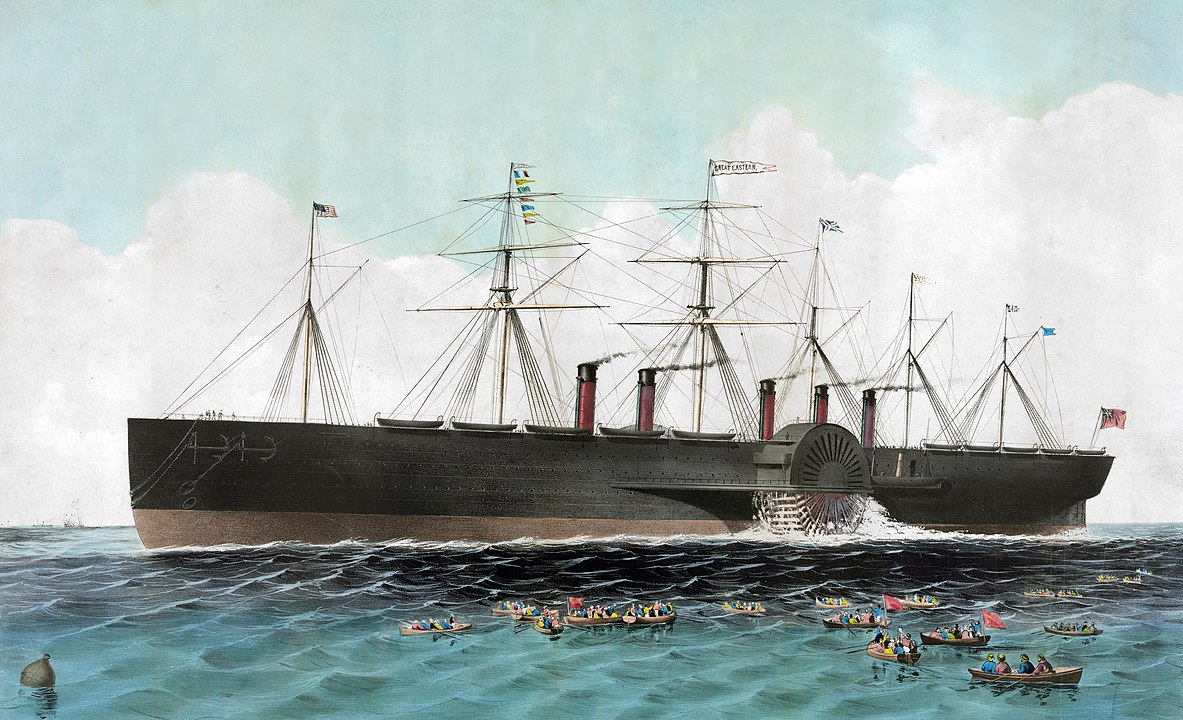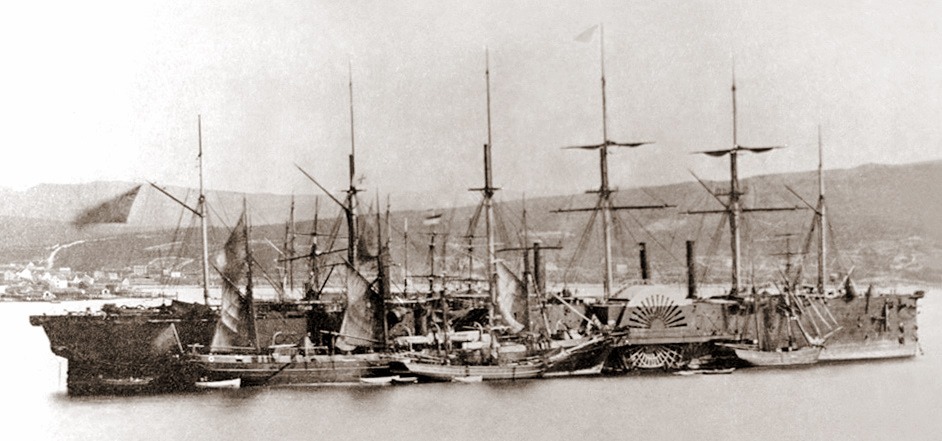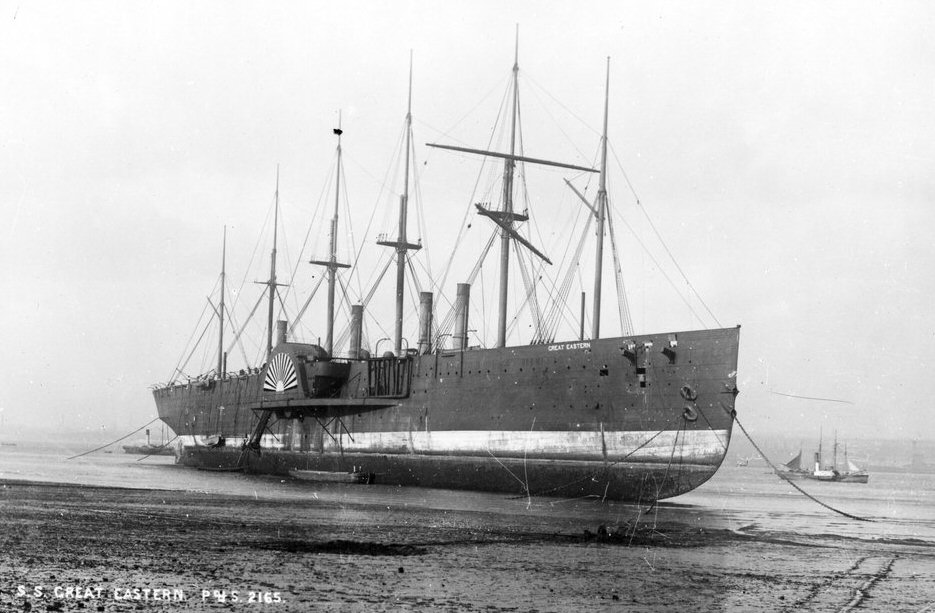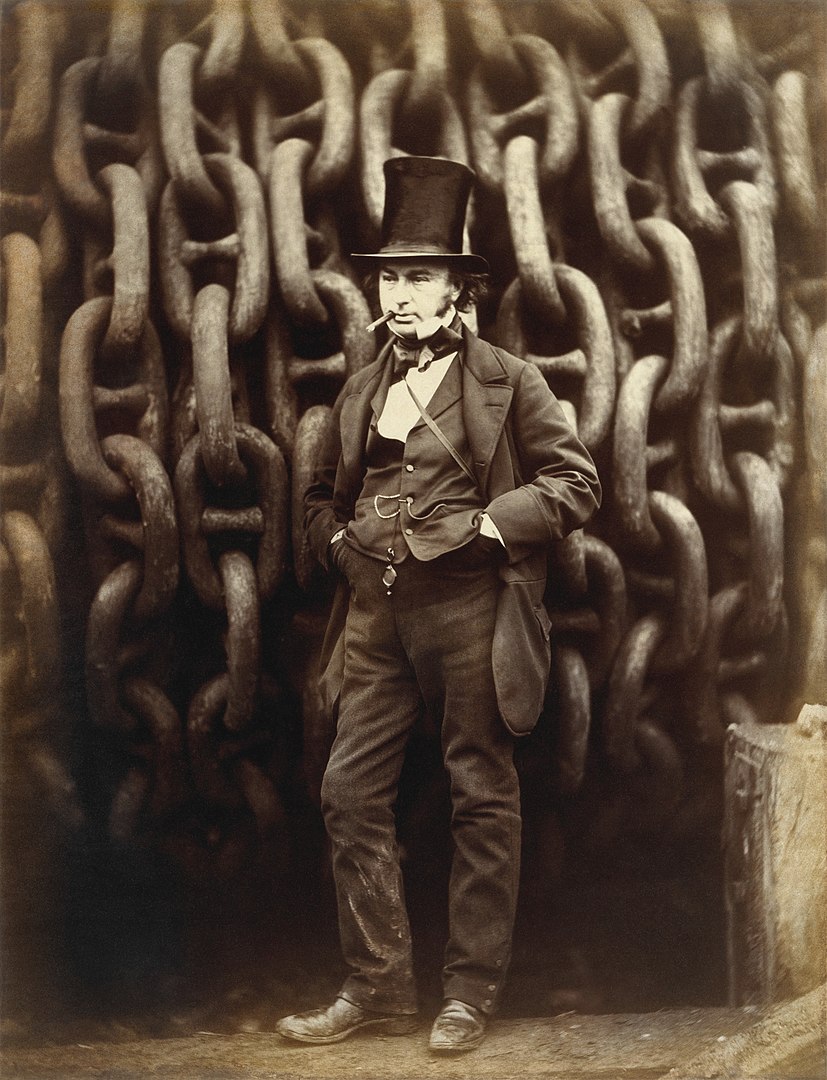The SS Great Eastern stands out as a colossal embodiment of 19th-century engineering prowess and ambition. Launched in 1858, this leviathan of the seas was the brainchild of Isambard Kingdom Brunel, a visionary engineer whose creations often pushed the boundaries of contemporary technology.
The Great Eastern was not just a ship; it was a symbol of the industrial might and innovative spirit of the Victorian era. This article explores the remarkable story of the Great Eastern, from its conception to its complex legacy.
What is The Great Eastern?
The Great Easter was a ship that stood as a testament to human ingenuity. Designed by Isambard Kingdom Brunel, one of the most ingenious engineers of his time, the Great Eastern was unlike any vessel ever seen before.
Designing the Colossus
Brunel’s vision for the Great Eastern was to create a ship so large and powerful that it could travel to Australia without needing to refuel. He imagined a vessel that could carry thousands of passengers in unparalleled comfort, a concept that was revolutionary at the time. The design of the Great Eastern featured a double iron hull, an innovation aimed at enhancing the ship’s strength and durability. This was a significant departure from the traditional wooden ships of the era.
Groundbreaking Construction
The construction of the Great Eastern was an ambitious project that pushed the boundaries of 19th-century technology. Built at the Millwall Iron Works on the River Thames, its construction was a spectacle that drew crowds. The ship measured an astonishing 692 feet in length and weighed around 18,915 tons, making it the largest ship of its time by a considerable margin.
The building process involved unprecedented challenges due to the ship’s size. Traditional shipbuilding tools and techniques had to be rethought and scaled up. One of the most significant challenges was launching the behemoth into the Thames, a feat that required innovative engineering solutions.
Innovations and Features
The Great Eastern was equipped with both paddle wheels and a screw propeller, an unusual combination that allowed it to navigate both the open sea and shallower river waters. It also boasted five funnels and six masts, a testament to its power and grandeur. Inside, the ship was the epitome of luxury, with spacious cabins, dining saloons, and even a grand piano.
The Challenges
Despite its impressive design and construction, the Great Eastern’s journey was fraught with financial difficulties and technical setbacks. The ship’s enormous size and cost overruns led to economic struggles for the company that built it. Furthermore, its maiden voyage in 1859 was marred by an explosion that caused further doubt about its viability.
The End of the Great Eastern
The Great Eastern, once celebrated as a marvel of maritime engineering, met an end that was as dramatic as its inception. Despite its groundbreaking design and massive scale, the ship’s career was not the triumphant success its creators had envisioned.
A Series of Misfortunes
The Great Eastern’s journey was marred by a series of unfortunate events and financial struggles. After its initial setbacks, including the explosion on its maiden voyage and ongoing financial woes, the ship never truly found its place as a commercial passenger liner. Its size, once seen as its greatest advantage, turned out to be a hindrance, making it difficult to operate profitably.
Transition to Cable Laying
In a twist of fate, the ship found a new purpose, not as a passenger liner but as a cable-laying vessel. The Great Eastern played a crucial role in laying transatlantic telegraph cables in the 1860s, helping to connect continents and revolutionize global communication. This period marked the most successful phase of the ship’s operational life.
The Final Days
However, the resurgence was short-lived. After its cable-laying days were over, the Great Eastern struggled to find a new role. By the 1880s, newer and more efficient ships had entered the scene, rendering the Great Eastern obsolete. The ship was eventually sold for scrap in 1888, marking a rather unceremonious end to what was once the world’s largest and most advanced steamship.
The dismantling of the Great Eastern was a lengthy and difficult process, reflecting the ship’s massive structure and complex construction. It took two years to completely break down the once-mighty vessel, a somber end to a ship that had been built with such hope and ambition.
Who Was Isambard Kingdom Brunel, the Designer of the Great Eastern?
Isambard Kingdom Brunel is an iconic figure in the world of engineering. Known for his bold and innovative designs, Brunel was the mastermind behind this colossal ship, which was a testament to his ambition and engineering prowess.
A Storied Career in Engineering
Brunel, born in 1806 in Britain, was a prodigious engineer whose works included the construction of railways, bridges, and tunnels. His projects, like the Great Western Railway and the Clifton Suspension Bridge, showcased his ability to tackle and overcome engineering challenges. Brunel was celebrated for his forward-thinking approach and his contributions to the Industrial Revolution.
Designing the Great Eastern
When Brunel embarked on the design of the Great Eastern, he aimed to create the largest and most advanced steamship of his time. His vision was for a ship that could travel to Australia without refueling, carry enough coal for the journey, and accommodate a large number of passengers. The design of the Great Eastern featured a double hull made of iron, a novel concept that provided extra strength and safety.
Brunel’s Innovations
Brunel’s design for the Great Eastern was groundbreaking. The ship’s sheer size was unprecedented, and it incorporated advanced technology, such as a combination of paddle wheels and a screw propeller. Brunel’s attention to detail and commitment to innovation were evident in every aspect of the ship’s design, from its luxurious interiors to its complex propulsion system.
Legacy of Brunel
Isambard Kingdom Brunel left a lasting legacy in the world of engineering. His work on the Great Eastern pushed the boundaries of shipbuilding and laid the groundwork for future maritime innovations. Brunel is remembered not only for his engineering feats but also for his daring vision and relentless pursuit of the unachievable.
Conclusion
Despite its turbulent history and eventual demise as a commercial vessel, the Great Eastern left an indelible mark on the world of shipbuilding and maritime travel. Its story is a complex tapestry of technological triumph, human ambition, and the hard lessons of pioneering engineering ventures.
The ship’s journey from a marvel of engineering to a scrapyard behemoth serves as a poignant reminder of the ever-evolving nature of technology and the challenges that come with innovation. The legacy of the Great Eastern goes beyond its physical lifespan; it represents the spirit of an era that dared to dream big and the enduring impact of those dreams on future generations.



